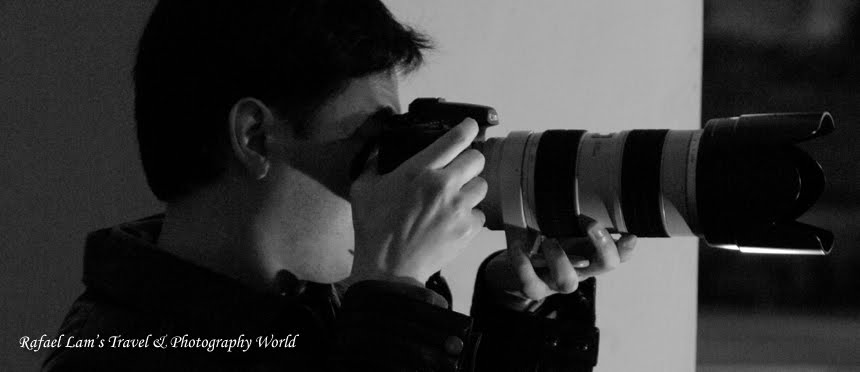我在雅典衛城(Acropolis)參觀了很久, 一方面欣賞這些難得一見的古建築, 另一方面希望拍到理想的照片。
早上和下午的光源變化可以令照片截言不同, 要拍到一些有氣氛的照片, 有時需要到同一地點來回拍攝幾次,
當陽光照射在建築物上所發出的金光, 會令本來藍色的天空變成深藍色。
所以鏡頭下的影像會比眼晴看到的更多更漂亮, 這就是攝影的樂趣!
衛城由阿提卡的平原延伸至陡峭的懸崖上,三面被懸崖包圍。人們只可由西面步行上去,
在該處有一較低的山脊連接至阿雷奧帕古斯山。其由藍灰色的石灰石建成,
因此其十分堅硬但卻可被水份滲透。其表面由片岩、沙岩與石灰泥組成,較石灰石軟身但可防水滲透。
此種建法已為噴水井提供了良好的環境,而且在山腳有遮蔽的洞穴,雅典衛城看來並沒有像
其他邁錫尼宮殿般受到暴力破壞,而且亦沒有曾被放火或大規模毀壞的痕跡,這是經由當時的文物推測而得。
這與雅典人傳說裡此地成功抵擋多利安人的入侵的論調吻合。現在無法得知上古時這裡的岩石建築是甚麼模樣的,
不過仍可得知此地曾被塞隆人在起義裡攻佔,並兩度被庇西特拉圖佔據,以奪取政權。而具有九門的
城牆則像是在城的西北角最大的水源處興建。庇西特拉圖在城的西南方,環城附近,建立了阿爾特蜜斯神殿,
因為這是其家鄉的宗教。這樣便有了水源,所以人們通常環繞著其居住。
該處最早的古代文物來自中期新石器時代,但很多文獻記載著早在早期新石器時代,阿提卡附近便有人居住(前6000年)。
當進入青銅時代後,邁錫尼的邁卡隆被建在山丘的頂部,為邁錫尼君主居住地,其家人、護衛、信徒、工匠與平民百姓
均居住在此。這個城市被厚硬的巨石牆所包圍。(其有兩層矮牆以巨石製造並灌以水泥,其城門亦非正常排列,
便得矮牆與箭塔可以對右方的入侵者進行攻擊。)在當時有一場大地震衛城的東北角裂開了,結果水份可以被該處土地吸收。
人們精心製作了一組梯級並在該處開井,在邁錫尼時代,這是受到保護的水源,
並且在城市被包圍時起重要作用,提供了寶貴的食水。(資料來自維基百科)
I stayed at the Acropolis for a very long time. On the one hand, I wanted to appreciate these
rare ancient buildings but on the other hand, I wanted to shoot some good pictures.
The differences of light in the morning and afternoon can produce totally different results.
To get the right mood, sometimes requires you to go back and forth several times in the same location.
This allows you to get the right amount of light to produce the picture that you want,
as the suns golden rays reflect off the buildings. They will also turn a blue sky into a darker richer blue.
That's why the images created under the watchful eye of the lens are more beautiful than
the images we see through our eyes. This is the fun of photography!
While the earliest artifacts date to the Middle Neolithic era, there have been documented habitations in Attica from
the Early Neolithic (6th millennium BC). There is little doubt that a Mycenaean megaron stood upon the hill during
the late Bronze Age.[citation needed] Nothing of this megaron survives except, probably, a single limestone column-base
and pieces of several sandstone steps. Soon after the palace was built a Cyclopean massive circuit wall was built,
760 meters long, up to 10 meters high, and ranging from 3.5 to 6 meters thick. This wall would serve as the main defense
for the acropolis until the 5th century. The wall consisted of two parapets built with large stone blocks and cemented
with an earth mortar called emplekton (Greek: ἔμπλεκτον). The wall follows typical Mycenaean convention in that
it followed the natural contour of the terrain and its gate was arranged obliquely, with a parapet and tower overhanging
the incomers' right-hand side, thus facilitating defense. There were two lesser approaches up the hill on its north side,
consisting of steep, narrow flights of steps cut in the rock. Homer is assumed to refer to this fortification when he
mentions the "strong-built House of Erechtheus" (Odyssey 7.81). At some point before the 13th century an earthquake caused
a fissure near the northeastern edge of the acropolis. This fissure extended some thirty five meters to a bed of soft marl
in which a well was dug. An elaborate set of stairs was built and the well was used as a protected source of drinking
water during some portion of the Mycenaean period, as it was invaluable in times of siege. (Information from Wekipedia)
pic. 1
雅典衛城上的神殿
The temple in the Acropolis




